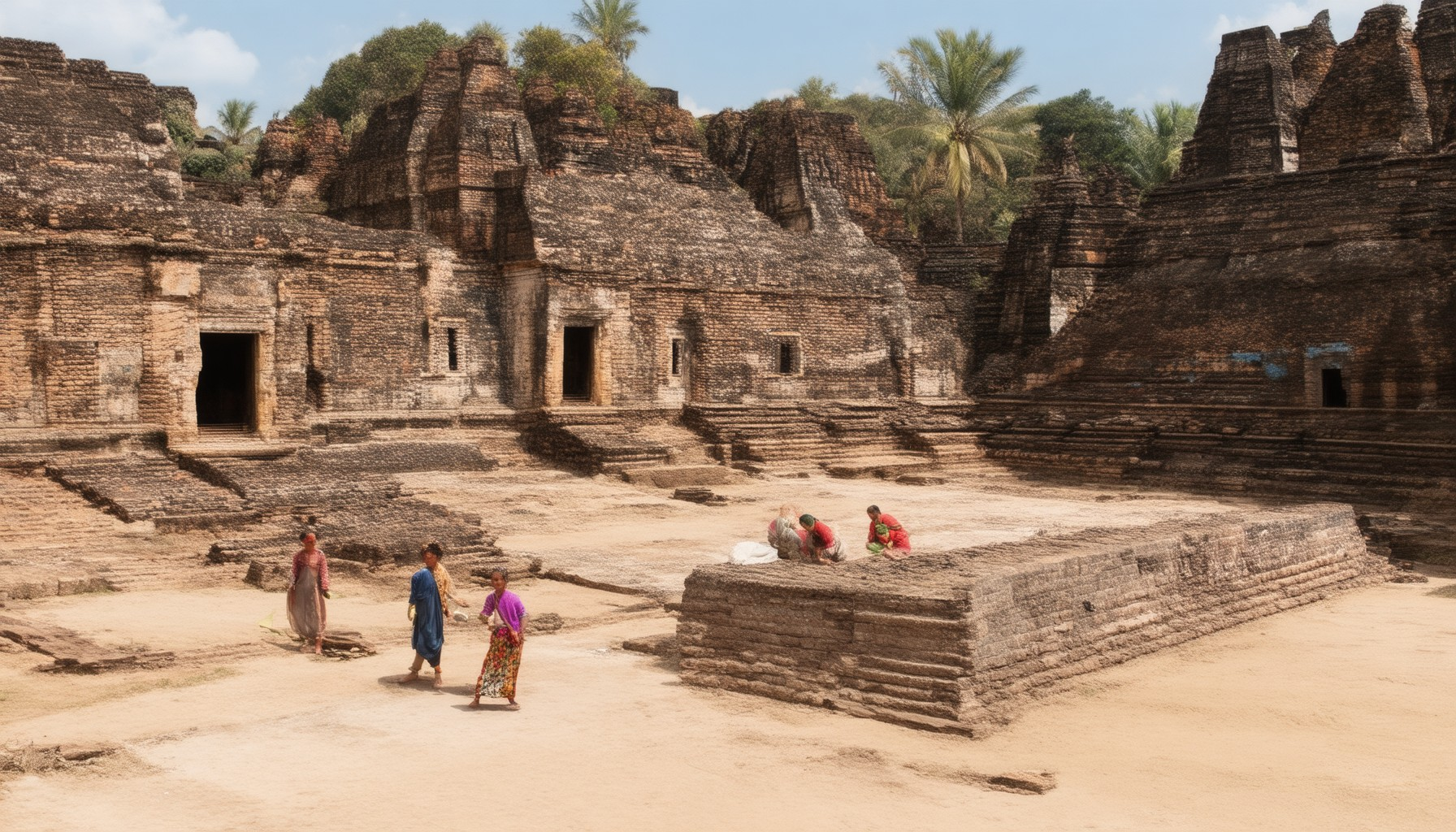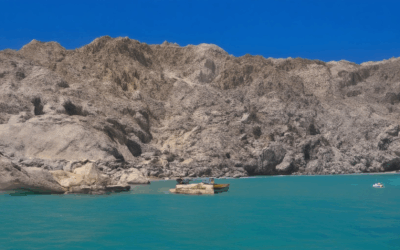Cultural conservation travel offers a unique blend of exploration and purpose, allowing travelers to delve into the heart of global cultures while actively contributing to heritage preservation. This transformative form of travel combines the thrill of discovery with the responsibility of safeguarding endangered traditions, wildlife, and historical sites. By immersing themselves in diverse landscapes and communities, travelers can gain profound insights into local customs, histories, and environmental stewardship, all while playing a vital role in fostering sustainable practices. Whether through volunteering on conservation projects, participating in eco-tours, or engaging with community-based initiatives, cultural conservation travel emerges as a powerful tool for creating lasting change and enriching one’s own journey.
Cultural Conservation Travel: Preserving Heritage Through Volunteering
Understanding Cultural Conservation Travel
Cultural Conservation Travel is a form of tourism focused on preserving cultural heritage. It involves visiting cultural sites and engaging in activities that contribute to their protection, often through volunteering. This type of travel blends exploration with active participation in cultural preservation, distinguishing it from other tourism forms like ecotourism, which primarily focuses on nature.
Role of Volunteering
Volunteering in Cultural Conservation Travel allows tourists to actively contribute to cultural preservation. Activities may include restoring historical sites, teaching traditional crafts, or assisting in community projects that safeguard local traditions. This approach not only enriches the visitor’s experience but also directly benefits the host community by supporting local economies and maintaining cultural authenticity.
Opportunities and Considerations
1. Finding Opportunities: Potential participants can seek opportunities through cultural preservation organizations, historical societies, NGOs, or specialized travel agencies. Researching these entities is essential to identify aligned interests and skills.
- Impact on Local Communities: Effective Cultural Conservation Travel ensures tourism revenue benefits locals, preventing the commercialization of cultural practices. Volunteering helps maintain authenticity by involving locals in preservation efforts, ensuring tourism supports community development.
- Skill Requirements: Depending on the project, volunteers may need skills like carpentry, archaeology, or cultural promotion. Assessing personal skills and communicating with organizations can help determine the best fit.
- Planning a Trip: Contacting the organization beforehand is advisable to understand their needs and prepare accordingly, including tool bring-alongs, language learning, or fundraising.
Conclusion
Cultural Conservation Travel offers a unique and rewarding travel experience, allowing individuals to explore diverse cultures while actively preserving heritage. This form of tourism not only enhances personal growth but also fosters sustainable community development, making it a valuable and enriching endeavor.

Example of Conservation Travel
Conservation travel involves visiting destinations dedicated to wildlife protection, habitat preservation, and environmental education. One notable example is volunteering with sea turtle conservation projects in countries like Costa Rica. These programs allow visitors to assist in monitoring turtle nests, protecting hatchlings, and collecting data on turtle sightings, often during nighttime patrols when turtles are most active on the beaches.
Another example includes participating in koala conservation efforts in regions like Queensland, Australia. Visitors can join wildlife volunteers in rehabilitating habitats and caring for injured or orphaned koalas through organizations such as the Australian Wildlife Rescue Network.
Additionally, conservation travel can involve educational tours led by experts to observe endangered species in their natural habitats. For instance, guided safaris in Kenya’s Maasai Mara National Reserve offer opportunities to learn about and support projects focused on protecting elephants and rhinos.
These experiences not only provide firsthand insights into conservation efforts but also encourage sustainable tourism practices, fostering a deeper connection between travelers and the ecosystems they visit.
Cultural Conservation
Cultural conservation refers to the systematic effort to identify, protect, and sustain the cultural heritage of a community, region, or the world. It encompasses the preservation of tangible and intangible cultural assets, ensuring their survival for future generations while fostering their transmission and appreciation.
Key Components of Cultural Conservation:
- Identification and Assessment :
Cultural conservation begins with recognizing and evaluating what constitutes culturally significant heritage. This includes landmarks, artifacts, traditions, and practices that hold historical, artistic, or social value. - Protection and Preservation :
Physical heritage is protected through legal frameworks and sustainable practices. This may involve restoring structures, digitizing artifacts, or establishing protected zones to prevent damage from natural disasters or human activity. - Education and Awareness :
Raising public awareness about the importance of cultural heritage is crucial. Educational programs and initiatives help communities understand their cultural roots and the threats they face, fostering a sense of responsibility towards preservation. - Adaptation and Relevance :
Cultural conservation also involves adapting heritage to contemporary contexts. Traditional practices may be reinterpreted or integrated with modern technologies to ensure their continued vibrancy and accessibility. - Collaboration and Global Networks :
International cooperation, as facilitated by organizations like UNESCO, supports member states in sharing knowledge and resources. This collaboration helps address challenges such as funding gaps and cross-border issues like artifact repatriation.
Challenges in Cultural Conservation:
- Funding : The financial burden of preserving cultural heritage can be substantial, requiring innovative solutions and partnerships.
- Risk Management : Natural disasters and human activities pose ongoing threats, necessitating robust risk management strategies.
- Ownership Disputes : Issues of ownership and repatriation complicate efforts, particularly regarding looted or stolen artifacts.
Role of Technology:
Modern technologies offer solutions such as 3D scanning and virtual reality, enabling digital preservation and access. These tools help bridge geographical gaps, making cultural heritage more accessible to a global audience.
Impact of Globalization:
Cultural conservation navigates the tension between preserving uniqueness and embracing global influences. Balancing respect for tradition with adaptability ensures that cultural heritage remains dynamic and relevant in a changing world.
In essence, cultural conservation is a multifaceted endeavor that safeguards the integrity and richness of cultural heritage, ensuring its enduring presence for future generations. It is a collaborative effort involving governments, institutions, communities, and individuals, working together to protect and celebrate the diverse legacy of humanity.

Does Travel Increase Cultural Understanding?
Yes, travel plays a significant role in fostering cultural understanding. Here’s how it contributes to breaking down barriers and promoting empathy:
- Direct Exposure to Diverse Cultures
- Travel provides firsthand experiences with different customs, languages, and traditions, reducing misunderstandings and biases.
- Engaging with local communities allows individuals to observe and participate in daily life, deepening their appreciation for cultural differences.
- Fostering Empathy and Perspective
- By immersing themselves in foreign environments, travelers develop a deeper understanding of others’ viewpoints and experiences.
- Shared experiences, such as trying local cuisine or attending festivals, create emotional connections that promote cultural sensitivity.
- Broadening Personal Horizons
- Travel challenges assumptions and expands perspectives, encouraging a more open-minded approach to diverse cultures and belief systems.
- Encounters with new art, architecture, and traditions inspire reflection and curiosity, enriching one’s worldview.
- Cultural Exchange and Mutual Respect
- Travel facilitates meaningful interactions between people from different backgrounds, fostering mutual respect and appreciation.
- It encourages dialogue and collaboration, leading to a more inclusive and harmonious society.
In addition to these benefits, platforms like Inxchan highlight the importance of travel as a tool for cultural exploration. Their stories and guides emphasize the transformative power of immersive travel experiences, encouraging readers to engage with global communities in meaningful ways.
Overall, travel serves as a powerful catalyst for cultural understanding, bridging gaps and promoting a more connected world.

What Does Conservation Mean in Travel and Tourism?
Conservation in travel and tourism refers to the practice of developing and managing natural and cultural areas to accommodate tourism while ensuring that these activities contribute positively to the preservation of biodiversity, ecosystems, and cultural heritage.
How Tourism Can Contribute to Conservation
- Eco-friendly tourism practices, such as sustainable lodging, guided tours that promote habitat protection, and educational programs that raise awareness about conservation efforts.
- Sustainable tourism that supports local communities through conservation initiatives, such as reforestation projects, wildlife monitoring, and habitat restoration.
- Supporting organizations and businesses that prioritize conservation, such as eco-certified accommodations, tour operators, and travel agencies that invest in protecting natural and cultural resources.
Key Principles of Conservation Tourism
- Minimizing environmental impact through responsible resource use, waste management, and energy efficiency.
- Promoting biodiversity by creating safe habitats for endangered species and supporting ecological restoration projects.
- Fostering cultural preservation by respecting local traditions, artifacts, and historical sites, ensuring that tourism benefits local communities without undermining their heritage.
Examples of Conservation Tourism in Action
- National parks and wildlife reserves offering eco-friendly accommodations, guided tours, and volunteer opportunities for visitors interested in conservation efforts.
- Eco-tourism destinations, such as rainforests, coral reefs, and wetlands, where tourists can participate in conservation activities like tree planting, bird watching, and marine debris removal.
- Community-based tourism initiatives, such as homestays and cultural exchanges, where travelers directly support local conservation projects and learn about sustainable living practices.
Challenges of Conservation Tourism
- Overcrowding in popular tourist spots, leading to habitat disruption and increased pollution.
- Conflict between tourism development and conservation goals, particularly in areas with limited resources.
- The need for ongoing education and awareness among travelers to ensure that their actions align with conservation principles.
Conclusion
Conservation tourism is a vital approach to balancing the demands of the travel industry with the urgent need to protect our planet and its inhabitants. By choosing ethical tourism operators and participating in conservation-focused activities, travelers can make a positive difference while enjoying unique and meaningful experiences.
For more information on how to get involved in conservation tourism, visit our website or explore our blog for tips and inspiration.
What is a form of tourism that supports conservation?
Ecotourism is one of the most prominent forms of tourism that prioritizes conservation and sustainability. It focuses on visiting natural and cultural destinations in a way that minimizes environmental impact while generating economic benefits for local communities.
- Ecotourism : This type of tourism emphasizes responsible travel practices, such as reducing waste, conserving water, and respecting wildlife habitats. It often involves visiting protected areas, national parks, and wildlife reserves to support conservation efforts.
- Sustainable Tourism : Sustainable tourism goes beyond ecotourism by incorporating practices that ensure long-term environmental, social, and economic stability. It includes initiatives like using renewable energy, supporting local businesses, and preserving cultural heritage.
- Volunteer Tourism : Volunteer tourism combines travel with volunteer work, allowing visitors to actively contribute to conservation projects. Activities may include habitat restoration, species monitoring, or community development programs.
- Cultural Tourism : Cultural tourism highlights the importance of preserving cultural heritage while promoting sustainable practices. It often involves visiting historical sites, participating in traditional events, and learning about local customs that align with conservation values.
- Adventure Tourism : Adventure tourism can support conservation by promoting activities like hiking, biking, and kayaking in pristine natural areas. These activities often require minimal environmental impact and can raise awareness about the importance of protecting these regions.
In addition to these forms, educational tourism plays a crucial role in raising awareness about conservation issues. Travelers who gain knowledge about endangered species, ecosystem management, and sustainable practices are more likely to become advocates for conservation.
To learn more about how you can travel responsibly and contribute to conservation efforts, visit our Travel Ethics Guide or explore our Adventure Travel Section .

The Three Types of Sustainable Travel
Sustainable travel encompasses various practices aimed at minimizing negative impacts on the environment, economy, and society. Below are the primary categories of sustainable travel:
- Environmental Sustainability
- Reducing carbon footprint through low-emission transportation and eco-friendly accommodations.
- Conserving water resources by using renewable energy and minimizing waste.
- Supporting wildlife conservation efforts by visiting protected areas responsibly.
- Economic Sustainability
- Promoting local economies by purchasing locally sourced products and services.
- Creating job opportunities through responsible tourism initiatives.
- Ensuring fair wages and safe working conditions for employees in the tourism industry.
- Socio-Cultural Sustainability
- Respecting local cultures by learning traditions and customs.
- Preserving historical and cultural heritage sites through mindful tourism.
- Building relationships based on mutual respect and understanding between travelers and host communities.
These principles guide travelers in making choices that benefit both themselves and the destinations they visit. By prioritizing sustainability, we can ensure that travel remains a force for positive change.





0 Comments